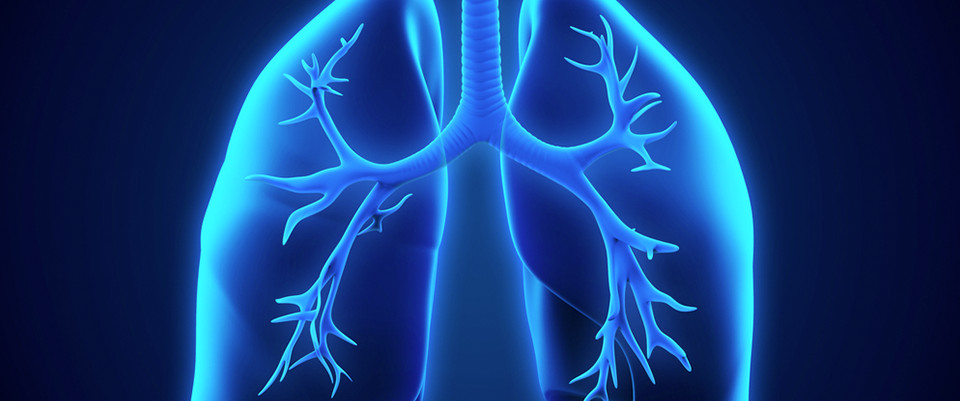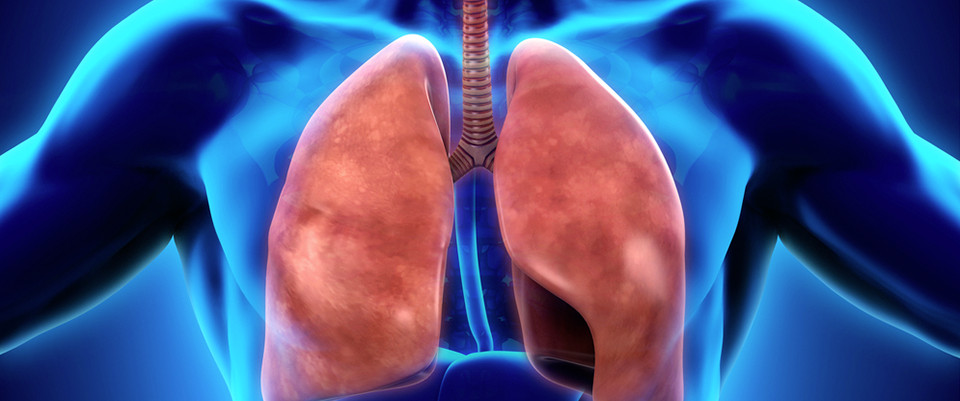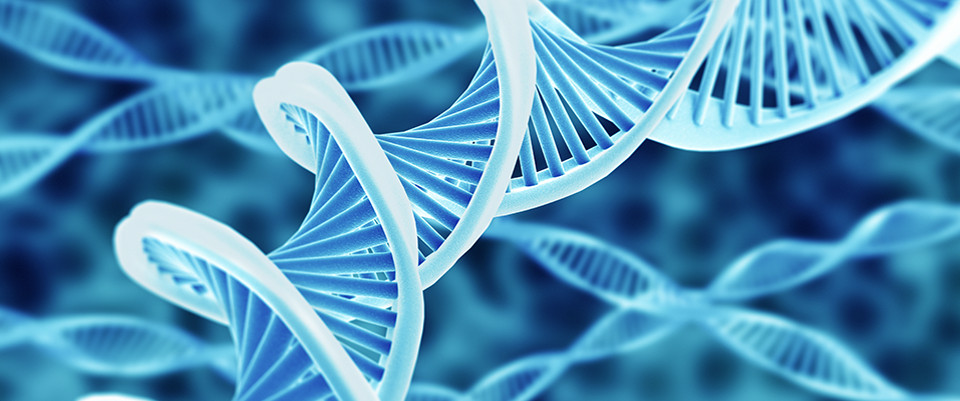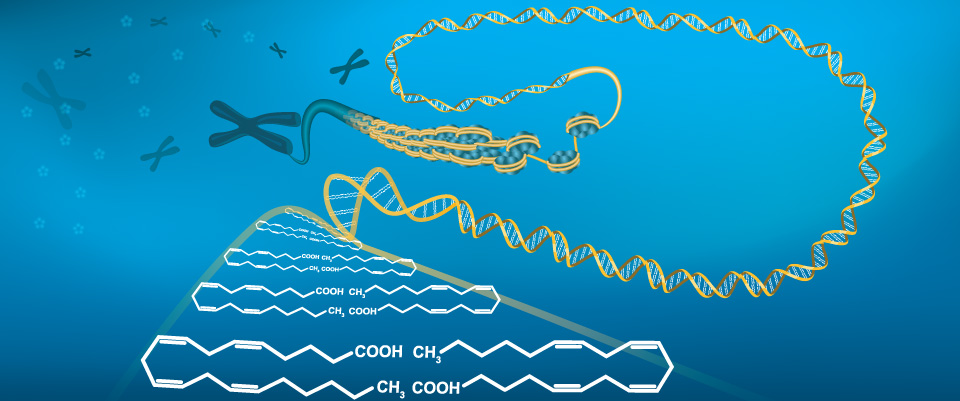PubMed
Obesity Increases Mortality and Modulates the Lung Metabolome during Pandemic H1N1 Influenza Virus Infection in Mice.
Obesity Increases Mortality and Modulates the Lung Metabolome during Pandemic H1N1 Influenza Virus Infection in Mice.
J Immunol. 2015 Apr 10;
Authors: Milner JJ, Rebeles J, Dhungana S, Stewart DA, Sumner SC, Meyers MH, Mancuso P, Beck MA
Abstract
Obese individuals are at greater risk for hospitalization and death from infection with the 2009 pandemic H1N1 influenza virus (pH1N1). In this study, diet-induced and genetic-induced obese mouse models were used to uncover potential mechanisms by which obesity increases pH1N1 severity. High-fat diet-induced and genetic-induced obese mice exhibited greater pH1N1 mortality, lung inflammatory responses, and excess lung damage despite similar levels of viral burden compared with lean control mice. Furthermore, obese mice had fewer bronchoalveolar macrophages and regulatory T cells during infection. Obesity is inherently a metabolic disease, and metabolic profiling has found widespread usage in metabolic and infectious disease models for identifying biomarkers and enhancing understanding of complex mechanisms of disease. To further characterize the consequences of obesity on pH1N1 infection responses, we performed global liquid chromatography-mass spectrometry metabolic profiling of lung tissue and urine. A number of metabolites were perturbed by obesity both prior to and during infection. Uncovered metabolic signatures were used to identify changes in metabolic pathways that were differentially altered in the lungs of obese mice such as fatty acid, phospholipid, and nucleotide metabolism. Taken together, obesity induces distinct alterations in the lung metabolome, perhaps contributing to aberrant pH1N1 immune responses.
PMID: 25862817 [PubMed - as supplied by publisher]
Human Urinary Composition Controls Siderocalin's Antibacterial Activity.
Human Urinary Composition Controls Siderocalin's Antibacterial Activity.
J Biol Chem. 2015 Apr 10;
Authors: Shields-Cutler RR, Crowley JR, Hung CS, Stapleton AE, Aldrich CC, Marschall J, Henderson JP
Abstract
During Escherichia coli urinary tract infections, cells in the human urinary tract release the antimicrobial protein siderocalin (SCN; also known as lipocalin 2, neutrophil gelatinase-associated lipocalin/NGAL, or 24p3). SCN can interfere with E. coli iron acquisition by sequestering ferric iron complexes with enterobactin, the conserved E. coli siderophore. Here we find that human urinary constituents can reverse this relationship, instead making enterobactin critical for overcoming SCN-mediated growth restriction. Urinary control of SCN activity exhibits wide ranging individual differences. We used these differences to identify elevated urinary pH and aryl metabolites as key biochemical host factors controlling urinary SCN activity. These aryl metabolites are well-known products of intestinal microbial metabolism. Together, these results identify an innate antibacterial immune interaction that is critically dependent upon individualistic chemical features of human urine.
PMID: 25861985 [PubMed - as supplied by publisher]
Serum metabolomics study of polycystic ovary syndrome based on UPLC-QTOF-MS coupled with a pattern recognition approach.
Serum metabolomics study of polycystic ovary syndrome based on UPLC-QTOF-MS coupled with a pattern recognition approach.
Anal Bioanal Chem. 2015 Apr 10;
Authors: Dong F, Deng D, Chen H, Cheng W, Li Q, Luo R, Ding S
Abstract
Metabolomics has become an important tool in distinguishing changes in metabolic pathways and the diagnosis of human disease. Polycystic ovary syndrome (PCOS) is a relatively complicated, heterogeneous endocrine disorder. The etiology and pathogenesis of PCOS remain uncertain. In this study, based on the platform of ultra performance liquid chromatography tandem quadrupole time-of-flight mass spectrometry (UPLC-QTOF-MS) and the method of pattern recognition, a comprehensive metabolomics approach has been applied to explore the changes in metabolic profiling between PCOS patients (n = 20) and controls (n = 15) as well as insulin-resistance (IR) PCOS patients (n = 11) and non-IR PCOS subjects (n = 9) in serum. In total, 36 metabolites were found significantly different between PCOS and controls, and 9 metabolites were discovered significantly different between IR and non-IR PCOS patients. Significant increases in the levels of saturated and unsaturated fatty acids (myristic acid, linoleic acid, 9-/13-HODE, etc.), fatty amides (palmitic amide, oleamide), dehydroepiandrosterone sulfate, L-glutamic acid, azelaic acid, L-glyceric acid, pyroglutamic acid, and decreases in the levels of lysophosphatidylethanolamine, lysophosphatidylcholine, uridine, and L-carnitine were found in PCOS patients compared with controls. In IR PCOS patients, linoleic acid, myristic acid, palmitoleic acid, and vaccenic acid also increased significantly compared with non-IR PCOS patients. All these changed metabolites showed abnormalities of steroid hormone biosynthesis, amino acids and nucleosides metabolism, glutathione metabolism, and lipids and carbohydrates metabolism in PCOS patients. The subgroup IR PCOS patients exhibited greater metabolic deviations than non-IR PCOS patients. These findings may help yield promising insights into the pathogenesis and advance the diagnosis and prevention of PCOS.
PMID: 25860656 [PubMed - as supplied by publisher]
Systemic Metabolomic Changes in Blood Samples of Lung Cancer Patients Identified by Gas Chromatography Time-of-Flight Mass Spectrometry.
Systemic Metabolomic Changes in Blood Samples of Lung Cancer Patients Identified by Gas Chromatography Time-of-Flight Mass Spectrometry.
Metabolites. 2015;5(2):192-210
Authors: Miyamoto S, Taylor SL, Barupal DK, Taguchi A, Wohlgemuth G, Wikoff WR, Yoneda KY, Gandara DR, Hanash SM, Kim K, Fiehn O
Abstract
Lung cancer is a leading cause of cancer deaths worldwide. Metabolic alterations in tumor cells coupled with systemic indicators of the host response to tumor development have the potential to yield blood profiles with clinical utility for diagnosis and monitoring of treatment. We report results from two separate studies using gas chromatography time-of-flight mass spectrometry (GC-TOF MS) to profile metabolites in human blood samples that significantly differ from non-small cell lung cancer (NSCLC) adenocarcinoma and other lung cancer cases. Metabolomic analysis of blood samples from the two studies yielded a total of 437 metabolites, of which 148 were identified as known compounds and 289 identified as unknown compounds. Differential analysis identified 15 known metabolites in one study and 18 in a second study that were statistically different (p-values <0.05). Levels of maltose, palmitic acid, glycerol, ethanolamine, glutamic acid, and lactic acid were increased in cancer samples while amino acids tryptophan, lysine and histidine decreased. Many of the metabolites were found to be significantly different in both studies, suggesting that metabolomics appears to be robust enough to find systemic changes from lung cancer, thus showing the potential of this type of analysis for lung cancer detection.
PMID: 25859693 [PubMed - as supplied by publisher]
A molecular structure matching approach to efficient identification of endogenous mammalian biochemical structures.
A molecular structure matching approach to efficient identification of endogenous mammalian biochemical structures.
BMC Bioinformatics. 2015 Mar 18;16(Suppl 5):S11
Authors: Hamdalla MA, Ammar RA, Rajasekaran S
Abstract
Metabolomics is the study of small molecules, called metabolites, of a cell, tissue or organism. It is of particular interest as endogenous metabolites represent the phenotype resulting from gene expression. A major challenge in metabolomics research is the structural identification of unknown biochemical compounds in complex biofluids. In this paper we present an efficient cheminformatics tool, BioSMXpress that uses known endogenous mammalian biochemicals and graph matching methods to identify endogenous mammalian biochemical structures in chemical structure space. The results of a comprehensive set of empirical experiments suggest that BioSMXpress identifies endogenous mammalian biochemical structures with high accuracy. BioSMXpress is 8 times faster than our previous work BioSM without compromising the accuracy of the predictions made. BioSMXpress is freely available at http://engr.uconn.edu/~rajasek/BioSMXpress.zip.
PMID: 25859612 [PubMed - as supplied by publisher]
Species-specific Standardisation of Licorice by Metabolomic Profiling of Flavanones and Chalcones.
Species-specific Standardisation of Licorice by Metabolomic Profiling of Flavanones and Chalcones.
Phytochem Anal. 2014 Jul-Aug;25(4):378-88
Authors: Simmler C, Jones T, Anderson JR, Nikolić DC, van Breemen RB, Soejarto DD, Chen SN, Pauli GF
Abstract
INTRODUCTION: Major phenolics from licorice roots (Glycyrrhiza sp.) are glycosides of the flavanone liquiritigenin (F) and its 2′-hydroxychalcone isomer, isoliquiritigenin (C). As the F and C contents fluctuate between batches of licorice, both quality control and standardisation of its preparations become complex tasks.
OBJECTIVE: To characterise the F and C metabolome in extracts from Glycyrrhiza glabra L. and Glycyrrhiza uralensis Fisch. ex DC. by addressing their composition in major F–C pairs and defining the total F:C proportion.
MATERIAL AND METHODS: Three types of extracts from DNA-authenticated samples were analysed by a validated UHPLC/UV method to quantify major F and C glycosides. Each extract was characterised by the identity of major F–C pairs and the proportion of Fs among all quantified Fs:Cs.
RESULTS: The F and C compositions and proportions were found to be constant for all extracts from a Glycyrrhiza species. All G. uralensis extracts contained up to 2.5 more Fs than G. glabra extracts. Major F–C pairs were B-ring glycosidated in G. uralensis, and A-/B-ring apiosyl-glucosidated in the G. glabra extracts. The F:C proportion was found to be linked to the glycosidation site: the more B-ring F-C glycosides were present, the higher was the final F:C proportion in the extract. These results enable the chemical differentiation of extracts from G. uralensis and G. glabra, which are characterised by total F:C proportions of 8.37:1.63 and 7.18:2.82, respectively.
CONCLUSION: Extracts from G. glabra and G. uralensis can be differentiated by their respective F and C compositions and proportions, which are both useful for further standardisation of licorice botanicals.
PMID: 25859589 [PubMed - in process]
Non-targeted metabolomics and lipidomics LC-MS data from maternal plasma of 180 healthy pregnant women.
Non-targeted metabolomics and lipidomics LC-MS data from maternal plasma of 180 healthy pregnant women.
Gigascience. 2015;4:16
Authors: Luan H, Meng N, Liu P, Fu J, Chen X, Rao W, Jiang H, Xu X, Cai Z, Wang J
Abstract
BACKGROUND: Metabolomics has the potential to be a powerful and sensitive approach for investigating the low molecular weight metabolite profiles present in maternal fluids and their role in pregnancy.
FINDINGS: In this Data Note, LC-MS metabolome, lipidome and carnitine profiling data were collected from 180 healthy pregnant women, representing six time points spanning all three trimesters, and providing sufficient coverage to model the progression of normal pregnancy.
CONCLUSIONS: As a relatively large scale, real-world dataset with robust numbers of quality control samples, the data are expected to prove useful for algorithm optimization and development, with the potential to augment studies into abnormal pregnancy. All data and ISA-TAB format enriched metadata are available for download in the MetaboLights and GigaScience databases.
PMID: 25859341 [PubMed]
Advances in biomarkers of major depressive disorder.
Advances in biomarkers of major depressive disorder.
Adv Clin Chem. 2015;68:177-204
Authors: Huang TL, Lin CC
Abstract
Major depressive disorder (MDD) is characterized by mood, vegetative, cognitive, and even psychotic symptoms and signs that can cause substantial impairments in quality of life and functioning. Biomarkers are measurable indicators that could help diagnosing MDD or predicting treatment response. In this chapter, lipid profiles, immune/inflammation, and neurotrophic factor pathways that have long been implicated in the pathogenesis of MDD are discussed. Then, pharmacogenetics and epigenetics of serotonin transport and its metabolism pathway, brain-derived neurotrophic factor, and abnormality of hypothalamo-pituitary-adrenocortical axis also revealed new biomarkers. Lastly, new techniques, such as proteomics and metabolomics, which allow researchers to approach the studying of MDD with new directions and make new discoveries are addressed. In the future, more data are needed regarding pathophysiology of MDD, including protein levels, single nucleotide polymorphism, epigenetic regulation, and clinical data in order to better identify reliable and consistent biomarkers for diagnosis, treatment choice, and outcome prediction.
PMID: 25858873 [PubMed - in process]
Lipidomics: new insight into kidney disease.
Lipidomics: new insight into kidney disease.
Adv Clin Chem. 2015;68:153-75
Authors: Zhao YY, Vaziri ND, Lin RC
Abstract
Due to the incidence of type-2 diabetes and hypertension, chronic kidney disease (CKD) has emerged as a major public health problem worldwide. CKD results in premature death from accelerated cardiovascular disease and various other complications. Early detection, careful monitoring of renal function, and response to therapeutic intervention are critical for prevention of CKD progression and its complications. Unfortunately, traditional biomarkers of renal function are insufficiently sensitive or specific to detect early stages of disease when therapeutic intervention is most effective. Therefore, more sensitive biomarkers of kidney disease are needed for early diagnosis, monitoring, and effective treatment. CKD results in profound changes in lipid and lipoprotein metabolism that, in turn, contribute to progression of CKD and its cardiovascular complications. Lipids and lipid-derived metabolites play diverse and critically important roles in the structure and function of cells, tissues, and biofluids. Lipidomics is a branch of metabolomics, which encompasses the global study of lipids and their biologic function in health and disease including identification of biomarkers for diagnosis, prognosis, prevention, and therapeutic response for various diseases. This review summarizes recent developments in lipidomics and its application to various kidney diseases including chronic glomerulonephritis, IgA nephropathy, chronic renal failure, renal cell carcinoma, diabetic nephropathy, and acute renal failure in clinical and experimental research. Analytical technologies, data analysis, as well as currently known metabolic biomarkers of kidney diseases are addressed. Future perspectives and potential limitations of lipidomics are discussed.
PMID: 25858872 [PubMed - in process]
Multi-omic signature of body weight change: results from a population-based cohort study.
Multi-omic signature of body weight change: results from a population-based cohort study.
BMC Med. 2015;13(1):48
Authors: Wahl S, Vogt S, Stückler F, Krumsiek J, Bartel J, Kacprowski T, Schramm K, Carstensen M, Rathmann W, Roden M, Jourdan C, Kangas AJ, Soininen P, Ala-Korpela M, Nöthlings U, Boeing H, Theis FJ, Meisinger C, Waldenberger M, Suhre K, Homuth G, Gieger C, Kastenmüller G, Illig T, Linseisen J, Peters A, Prokisch H, Herder C, Thorand B, Grallert H
Abstract
BACKGROUND: Excess body weight is a major risk factor for cardiometabolic diseases. The complex molecular mechanisms of body weight change-induced metabolic perturbations are not fully understood. Specifically, in-depth molecular characterization of long-term body weight change in the general population is lacking. Here, we pursued a multi-omic approach to comprehensively study metabolic consequences of body weight change during a seven-year follow-up in a large prospective study.
METHODS: We used data from the population-based Cooperative Health Research in the Region of Augsburg (KORA) S4/F4 cohort. At follow-up (F4), two-platform serum metabolomics and whole blood gene expression measurements were obtained for 1,631 and 689 participants, respectively. Using weighted correlation network analysis, omics data were clustered into modules of closely connected molecules, followed by the formation of a partial correlation network from the modules. Association of the omics modules with previous annual percentage weight change was then determined using linear models. In addition, we performed pathway enrichment analyses, stability analyses, and assessed the relation of the omics modules with clinical traits.
RESULTS: Four metabolite and two gene expression modules were significantly and stably associated with body weight change (P-values ranging from 1.9 × 10-4 to 1.2 × 10-24). The four metabolite modules covered major branches of metabolism, with VLDL, LDL and large HDL subclasses, triglycerides, branched-chain amino acids and markers of energy metabolism among the main representative molecules. One gene expression module suggests a role of weight change in red blood cell development. The other gene expression module largely overlaps with the lipid-leukocyte (LL) module previously reported to interact with serum metabolites, for which we identify additional co-expressed genes. The omics modules were interrelated and showed cross-sectional associations with clinical traits. Moreover, weight gain and weight loss showed largely opposing associations with the omics modules.
CONCLUSIONS: Long-term weight change in the general population globally associates with serum metabolite concentrations. An integrated metabolomics and transcriptomics approach improved the understanding of molecular mechanisms underlying the association of weight gain with changes in lipid and amino acid metabolism, insulin sensitivity, mitochondrial function as well as blood cell development and function.
PMID: 25857605 [PubMed - in process]
Improving the quality of biomarker candidates in untargeted metabolomics via peak table-based alignment of comprehensive two-dimensional gas chromatography-mass spectrometry data.
Improving the quality of biomarker candidates in untargeted metabolomics via peak table-based alignment of comprehensive two-dimensional gas chromatography-mass spectrometry data.
J Chromatogr A. 2015 Mar 7;
Authors: Bean HD, Hill JE, Dimandja JM
Abstract
The potential of high-resolution analytical technologies like GC×GC/TOF MS in untargeted metabolomics and biomarker discovery has been limited by the development of fully automated software that can efficiently align and extract information from multiple chromatographic data sets. In this work we report the first investigation on a peak-by-peak basis of the chromatographic factors that impact GC×GC data alignment. A representative set of 16 compounds of different chromatographic characteristics were followed through the alignment of 63 GC×GC chromatograms. We found that varying the mass spectral match parameter had a significant influence on the alignment for poorly-resolved peaks, especially those at the extremes of the detector linear range, and no influence on well-chromatographed peaks. Therefore, optimized chromatography is required for proper GC×GC data alignment. Based on these observations, a workflow is presented for the conservative selection of biomarker candidates from untargeted metabolomics analyses.
PMID: 25857541 [PubMed - as supplied by publisher]
Antiphospholipid Antibodies Alter Cell-Death-Regulating Lipid Metabolites in First and Third Trimester Human Placentae.
Antiphospholipid Antibodies Alter Cell-Death-Regulating Lipid Metabolites in First and Third Trimester Human Placentae.
Am J Reprod Immunol. 2015 Apr 9;
Authors: Pantham P, Heazell AE, Mullard G, Begley P, Chen Q, Brown M, Dunn WB, Chamley LW
Abstract
PROBLEM: Antiphospholipid antibodies (aPL) are maternal autoantibodies that increase the risk of a woman developing preeclampsia 10-fold. aPL are internalized into the syncytiotrophoblast and increase extrusion of necrotic trophoblast debris into the maternal blood. This necrotic trophoblast debris may trigger endothelial cell dysfunction contributing to the pathogenesis of preeclampsia. We hypothesize that aPL directly affect placental metabolism, leading to increased syncytiotrophoblast death.
METHODS OF STUDY: First and third trimester human placental explants were cultured with aPL, a control antibody, or media only, and placental conditioned culture media was examined by mass spectroscopy. Molecular targets of interest were investigated using qRTPCR and immunohistochemistry.
RESULTS: The levels of 79 and 132 metabolites, respectively, were altered due to the treatment of first and third trimester placental explants with aPL. These included ceramides and diacylglycerols, which play important roles in cell death regulatory pathways. Antiphospholipid antibodies also decreased the expression of protein kinase C-epsilon (PRKCE) in placental explants, possibly due to the disrupted balance between ceramides and diacylglycerols caused by aPL.
CONCLUSION: One mechanism by which aPL cause aberrant cell death in the syncytiotrophoblast in the first and third trimester is by disruption of placental lipid signaling and decreased expression of PRKCE.
PMID: 25856778 [PubMed - as supplied by publisher]
Altered Plasma Lysophosphatidylcholines and Amides in Non-Obese and Non-Diabetic Subjects with Borderline-To-Moderate Hypertriglyceridemia: A Case-Control Study.
Altered Plasma Lysophosphatidylcholines and Amides in Non-Obese and Non-Diabetic Subjects with Borderline-To-Moderate Hypertriglyceridemia: A Case-Control Study.
PLoS One. 2015;10(4):e0123306
Authors: Lee SY, Kim M, Jung S, Lee SH, Lee JH
Abstract
Hypertriglyceridemia (HTG) is a risk factor for atherosclerotic cardiovascular disease (CVD). We investigated alterations in plasma metabolites associated with borderline-to-moderate HTG (triglycerides (TG) 150-500 mg/dL). Using UPLC-LTQ-Orbitrap mass spectrometry analysis, the metabolomics profiles of 111 non-diabetic and non-obese individuals with borderline-to-moderate HTG were compared with those of 111 age- and sex-matched controls with normotriglyceridemia (NTG, TG <150 mg/dL). When compared to the NTG control group, the HTG group exhibited higher plasma levels of lysophosphatidylcholines (lysoPCs), including C14:0 (q = 0.001) and C16:0 (q = 1.8E-05), and several amides, including N-ethyldodecanamide (q = 2.9E-05), N-propyldodecanamide (q = 3.5E-05), palmitoleamide (q = 2.9E-06), and palmitic amide (q = 0.019). The metabolomic profiles of the HTG group also exhibited lower plasma levels of cis-4-octenedioic acid (q<1.0E-9) and docosanamide (q = 0.002) compared with those of the NTG controls. LysoPC 16:0 and palmitoleamide emerged as the primary metabolites able to discriminate the HTG group from the NTG group in a partial least-squares discriminant analysis and were positively associated with the fasting triglyceride levels. We identified alterations in lysoPCs, amides, and cis-4-octenedioic acid among non-diabetic and non-obese individuals with borderline-to-moderate HTG. These results provide novel insights into the metabolic alterations that occur in the early metabolic stages of HTG. This information may facilitate the design of early interventions to prevent disease progression.
PMID: 25856314 [PubMed - as supplied by publisher]
Metabolomics analysis and biomarker identification for the brain of rats exposed subchronically to the mixtures of low dose cadmium and chlorpyrifos.
Metabolomics analysis and biomarker identification for the brain of rats exposed subchronically to the mixtures of low dose cadmium and chlorpyrifos.
Chem Res Toxicol. 2015 Apr 9;
Authors: Xu MY, Sun YJ, Wang P, Xu HY, Chen LP, Zhu L, Wu YJ
Abstract
Cadmium (Cd) and chlorpyrifos (CPF) are widespread harmful environmental pollutants with neurotoxicity to mammalians. Although the exposure to Cd and CPF at the same time may pose significant risk to human health, the subchronic combined neurotoxicity of these two chemicals at low-level in the brain is poorly understood. In this study, we treated rats with three doses (low, middle, and high) of Cd, CPF, or their mixtures for 90 days. No obvious symptom was observed in the treated animals except those treated with high dose CPF. Histological results showed that middle and high doses of the chemicals caused neuronal cell damage in brains. GC-MS-based metabonomics analysis revealed that energy and amino acid metabolism was disturbed in the brains of rats exposed to the two chemicals and their combinations even at low doses. We further identified the unique brain metabolite biomarkers for Cd-, CPF-, or their combination-treated rats. Two amino acids tyrosine and L-leucine were identified as the biomarkers for Cd and CPF treatment, respectively. In addition, a set of five unique biomarkers (1,2-propanediol-1-phosphate, D-gluconic acid, 9H-purine, serine, 2-ketoisovaleric acid) was identified for the mixtures of Cd and CPF. Therefore, the metabolomics analysis is more sensitive than regular clinical observation and pathological examination to detect the neurotoxicity of the individual and combined Cd and CPF at low levels. Overall, these results identified the unique biomarkers for Cd and CPF exposure, which provide new insights to the mechanism of their joint toxicity.
PMID: 25856237 [PubMed - as supplied by publisher]
Exometabolomics and MSI: deconstructing how cells interact to transform their small molecule environment.
Exometabolomics and MSI: deconstructing how cells interact to transform their small molecule environment.
Curr Opin Biotechnol. 2015 Apr 4;34:209-216
Authors: Silva LP, Northen TR
Abstract
Metabolism is at the heart of many biotechnologies from biofuels to medical diagnostics. Metabolomic methods that provide glimpses into cellular metabolism have rapidly developed into a critical component of the biotechnological development process. Most metabolomics methods have focused on what is happening inside the cell. Equally important are the biochemical transformations of the cell, and their effect on other cells and their environment; the exometabolome. Exometabolomics is therefore gaining popularity as a robust approach for obtaining rich phenotypic data, and being used in bioprocessing and biofuel development. Mass spectrometry imaging approaches, including several nanotechnologies, provide complimentary information by localizing metabolic processes within complex biological matrices. Together, the two technologies can provide new insights into the metabolism and interactions of cells.
PMID: 25855407 [PubMed - as supplied by publisher]
SHMT2 drives glioma cell survival in ischaemia but imposes a dependence on glycine clearance.
SHMT2 drives glioma cell survival in ischaemia but imposes a dependence on glycine clearance.
Nature. 2015 Apr 8;
Authors: Kim D, Fiske BP, Birsoy K, Freinkman E, Kami K, Possemato RL, Chudnovsky Y, Pacold ME, Chen WW, Cantor JR, Shelton LM, Gui DY, Kwon M, Ramkissoon SH, Ligon KL, Kang SW, Snuderl M, Vander Heiden MG, Sabatini DM
Abstract
Cancer cells adapt their metabolic processes to support rapid proliferation, but less is known about how cancer cells alter metabolism to promote cell survival in a poorly vascularized tumour microenvironment. Here we identify a key role for serine and glycine metabolism in the survival of brain cancer cells within the ischaemic zones of gliomas. In human glioblastoma multiforme, mitochondrial serine hydroxymethyltransferase (SHMT2) and glycine decarboxylase (GLDC) are highly expressed in the pseudopalisading cells that surround necrotic foci. We find that SHMT2 activity limits that of pyruvate kinase (PKM2) and reduces oxygen consumption, eliciting a metabolic state that confers a profound survival advantage to cells in poorly vascularized tumour regions. GLDC inhibition impairs cells with high SHMT2 levels as the excess glycine not metabolized by GLDC can be converted to the toxic molecules aminoacetone and methylglyoxal. Thus, SHMT2 is required for cancer cells to adapt to the tumour environment, but also renders these cells sensitive to glycine cleavage system inhibition.
PMID: 25855294 [PubMed - as supplied by publisher]
Identification of endogenous metabolites in human sperm cells using (1) H-NMR and GC-MS.
Identification of endogenous metabolites in human sperm cells using (1) H-NMR and GC-MS.
Andrology. 2015 Apr 8;
Authors: Paiva C, Amaral A, Rodriguez M, Canyellas N, Correig X, Ballescà JL, Ramalho-Santos J, Oliva R
Abstract
The objective of this study was to contribute to the first comprehensive metabolomic characterization of the human sperm cell through the application of two untargeted platforms based on proton nuclear magnetic resonance ((1) H-NMR) spectroscopy and gas chromatography coupled to mass spectrometry (GC-MS). Using these two complementary strategies, we were able to identify a total of 69 metabolites, of which 42 were identified using NMR, 27 using GC-MS and 4 by both techniques. The identity of some of these metabolites was further confirmed by two-dimensional (1) H-(1) H homonuclear correlation spectroscopy (COSY) and (1) H-(13) C heteronuclear single-quantum correlation (HSQC) spectroscopy. Most of the metabolites identified are reported here for the first time in mature human spermatozoa. The relationship between the metabolites identified and the previously reported sperm proteome was also explored. Interestingly, overrepresented pathways included not only the metabolism of carbohydrates, but also of lipids and lipoproteins. Of note, a large number of the metabolites identified belonged to the amino acids, peptides and analogues super class. The identification of this initial set of metabolites represents an important first step to further study their function in male gamete physiology and to explore potential reasons for dysfunction in future studies. We also demonstrate that the application of NMR and MS provides complementary results, thus constituting a promising strategy towards the completion of the human sperm cell metabolome.
PMID: 25854681 [PubMed - as supplied by publisher]
Monitoring alcoholic fermentation: an untargeted approach.
Related Articles
Monitoring alcoholic fermentation: an untargeted approach.
J Agric Food Chem. 2014 Jul 16;62(28):6784-93
Authors: Ferreira AC, Monforte AR, Teixeira CS, Martins R, Fairbairn S, Bauer FF
Abstract
This work describes the utility and efficiency of a metabolic profiling pipeline that relies on an unsupervised and untargeted approach applied to a HS-SPME/GC-MS data. This noninvasive and high throughput methodology enables "real time" monitoring of the metabolic changes inherent to the biochemical dynamics of a perturbed complex biological system and the extraction of molecular candidates that are latter validated on its biochemical context. To evaluate the efficiency of the pipeline five different fermentations, carried on a synthetic media and whose perturbation was the nitrogen source, were performed in 5 and 500 mL. The smaller volume fermentations were monitored online by HS-SPME/GC-MS, allowing to obtain metabolic profiles and molecular candidates time expression. Nontarget analysis was applied using MS data in two ways: (i) one dimension (1D), where the total ion chromatogram per sample was used, (ii) two dimensions (2D), where the integrity time vs m/z per sample was used. Results indicate that the 2D procedure captured the relevant information more efficiently than the 1D. It was also seen that although there were differences in the fermentation performance in different scales, the metabolic pathways responsible for production of metabolites that impact the quality of the volatile fraction was unaffected, so the proposed pipeline is suitable for the study of different fermentation systems that can undergo subsequent sensory validation on a larger scale.
PMID: 24976138 [PubMed - indexed for MEDLINE]
Metabolomic Method: UPLC-q-ToF Polar and Non-Polar Metabolites in the Healthy Rat Cerebellum Using an In-Vial Dual Extraction.
Metabolomic Method: UPLC-q-ToF Polar and Non-Polar Metabolites in the Healthy Rat Cerebellum Using an In-Vial Dual Extraction.
PLoS One. 2015;10(4):e0122883
Authors: Ebshiana AA, Snowden SG, Thambisetty M, Parsons R, Hye A, Legido-Quigley C
Abstract
Unbiased metabolomic analysis of biological samples is a powerful and increasingly commonly utilised tool, especially for the analysis of bio-fluids to identify candidate biomarkers. To date however only a small number of metabolomic studies have been applied to studying the metabolite composition of tissue samples, this is due, in part to a number of technical challenges including scarcity of material and difficulty in extracting metabolites. The aim of this study was to develop a method for maximising the biological information obtained from small tissue samples by optimising sample preparation, LC-MS analysis and metabolite identification. Here we describe an in-vial dual extraction (IVDE) method, with reversed phase and hydrophilic liquid interaction chromatography (HILIC) which reproducibly measured over 4,000 metabolite features from as little as 3mg of brain tissue. The aqueous phase was analysed in positive and negative modes following HILIC separation in which 2,838 metabolite features were consistently measured including amino acids, sugars and purine bases. The non-aqueous phase was also analysed in positive and negative modes following reversed phase separation gradients respectively from which 1,183 metabolite features were consistently measured representing metabolites such as phosphatidylcholines, sphingolipids and triacylglycerides. The described metabolomics method includes a database for 200 metabolites, retention time, mass and relative intensity, and presents the basal metabolite composition for brain tissue in the healthy rat cerebellum.
PMID: 25853858 [PubMed - as supplied by publisher]
Learning to Classify Organic and Conventional Wheat - A Machine Learning Driven Approach Using the MeltDB 2.0 Metabolomics Analysis Platform.
Learning to Classify Organic and Conventional Wheat - A Machine Learning Driven Approach Using the MeltDB 2.0 Metabolomics Analysis Platform.
Front Bioeng Biotechnol. 2015;3:35
Authors: Kessler N, Bonte A, Albaum SP, Mäder P, Messmer M, Goesmann A, Niehaus K, Langenkämper G, Nattkemper TW
Abstract
We present results of our machine learning approach to the problem of classifying GC-MS data originating from wheat grains of different farming systems. The aim is to investigate the potential of learning algorithms to classify GC-MS data to be either from conventionally grown or from organically grown samples and considering different cultivars. The motivation of our work is rather obvious nowadays: increased demand for organic food in post-industrialized societies and the necessity to prove organic food authenticity. The background of our data set is given by up to 11 wheat cultivars that have been cultivated in both farming systems, organic and conventional, throughout 3 years. More than 300 GC-MS measurements were recorded and subsequently processed and analyzed in the MeltDB 2.0 metabolomics analysis platform, being briefly outlined in this paper. We further describe how unsupervised (t-SNE, PCA) and supervised (SVM) methods can be applied for sample visualization and classification. Our results clearly show that years have most and wheat cultivars have second-most influence on the metabolic composition of a sample. We can also show that for a given year and cultivar, organic and conventional cultivation can be distinguished by machine-learning algorithms.
PMID: 25853128 [PubMed]











